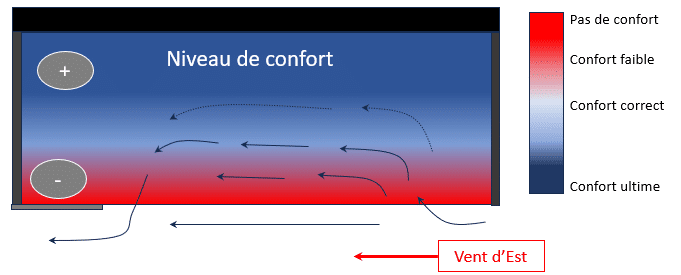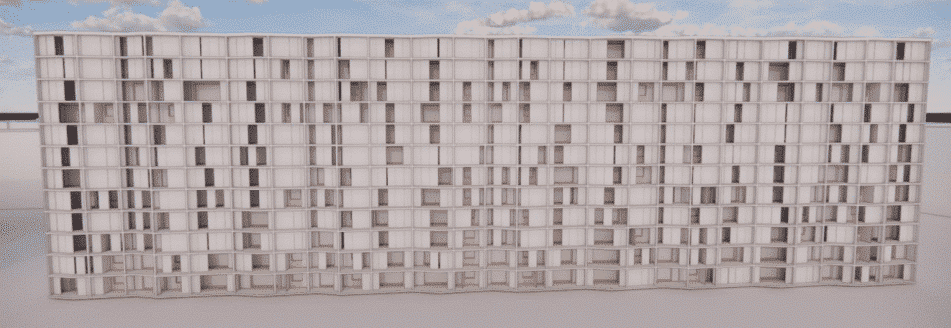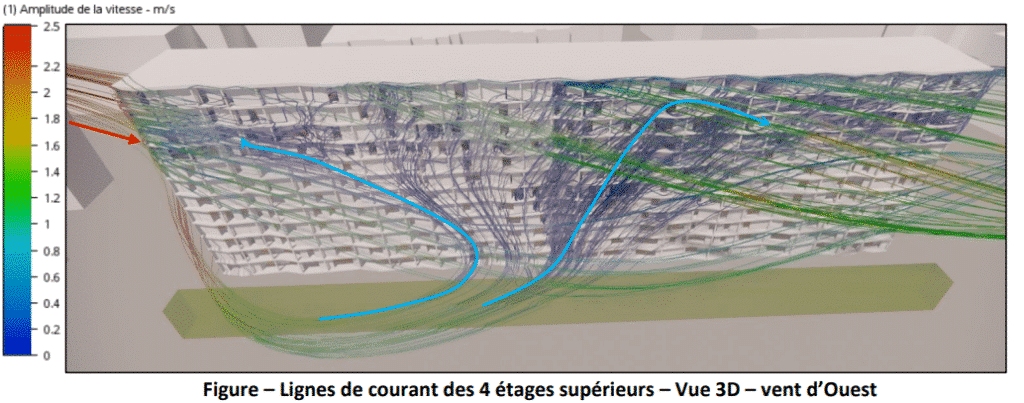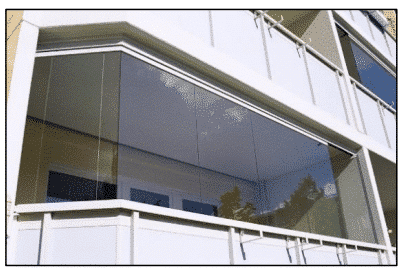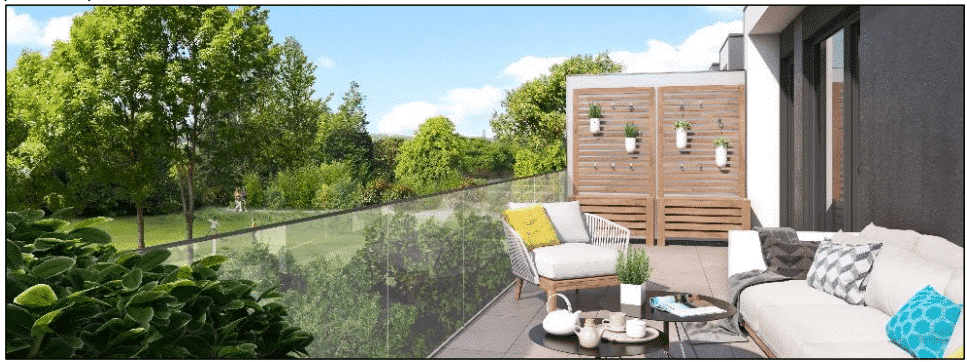Home » Air & Wind » Numerical simulation of pedestrian comfort in an urban environment » Wind comfort – Balconies
Wind comfort – Balconies
Wind comfort study for balconies
EOLIOS contributed its technical expertise in the understanding and modeling of large-volume outdoor airflow in relation to the realization of CFD studies.
Wind comfort study for balconies
Year
2023
Customer
Location
France
Typology
Air & Wind
Continue navigation :
Our other projects :
Latest news :
Wind study on a block of flats
Assessing occupants' thermal comfort on balconies: what's at stake?
Before any new building is constructed involving individual outdoor spaces such as balconies, it is necessary to assess the thermal comfort of occupants on balconies and identify any problem areas. There are many ways to protect your balcony from the wind. The solution studied here is the use of sliding panels that do not completely enclose the balcony. Winds are colder and have a higher amplitude in winter. However, if the balcony is not fully enclosed during this period, it cannot be used due to the very low temperatures.
The aim of the wind study is to verify the wind speed profile on the building’s balconies, mainly those on the highest floors, and then to propose alternatives for optimizing the comfort of residents on their balconies.
Theclimatic analysis of the site is a fundamental step in any study of comfort on balconies. It allows us to determine the maximum speed reached over a year and the prevailing winds at the site using wind roses.
CFD studies have enabled us to visualize the various aeraulic phenomena for different wind orientations, which in turn has enabled us to optimize the geometry for the best possible wind turbine performance.
Comfort level on balconies
Wind amplitude on balconies: when do they become unoccupiable?
Before a building is constructed, the question of occupant comfort arises. Balconies are usually exposed to the wind. Depending on their amplitude, these winds can make balconies unoccupiable. It is therefore necessary to ensure that a good level of comfort on balconies is possible, at least in spring and summer when the weather is warm and sunny. Balconies are rated uncomfortable when wind speeds exceed 1 m/s.
Here are some orders of magnitude for V wind speeds:
- V < 0.2: speed in a closed space
- 0.2 < V < 0.5: velocity in a closed space when the window is opened, i.e. with an air current
- 0.4 < V < 1: breeze
- V > 1: when a fan is running
- V > 2: unpleasant wind
CFD simulation of wind around the building
Focus on balconies: why only detailed modeling is needed for this project?
CFD simulation enables us to control the specific aeraulic phenomena induced by the particular geometry of balconies, by studying the airflow around the building. Air velocities give an indication of the comfort level of inhabitants. Before any simulation, a 3D CFD model of the structure is produced. In this project, the interior of the building is not important, only the balconies have been modeled in detail.
Depending on the origin of the wind, air recirculation is sometimes observed at the rear of the building. As a result, some of the air arriving on the ground will be slowed down by friction, and will tend to flow upwards towards the building. Air then rushes into certain balconies, which can cause discomfort even when the wind is not blowing towards the building facade. This particular phenomenon must be taken into account before any building is constructed.
To determine the level of comfort on balconies, a local study of air speeds is carried out. It is possible to obtain the velocity vectors within each balcony. This makes it possible to observe areas of recirculation that are not disruptive, but also to detect areas of high speed and airflow.
Solutions to enhance residents' comfort
Enclosed spaces and glazed railings: possible alternatives for maximizing comfort on balconies in the project building
To maximize the comfort of the project’s inhabitants on their balconies, it is necessary to protect them from the wind. Artificial or plant-based windbreaks can be installed to limit wind speed in certain areas, break up turbulence or guide air flows. In this study, we have seen the effects of sliding panels as a solution against wind on balconies. Enclosed spaces and glazed railings are also possible solutions for this building project.
- Sliding panels
Installing a large number of sliding panels on balconies helps keep the wind out. The main feature of these panels is that they can be moved at will. This solution seems perfect for the study under consideration. The mobility of the panels means they can be opened in summer, allowing the balcony to be ventilated. This prevents overheating in balconies in summer. What’s more, in winter, the panels create a winter garden with a greenhouse effect in the balcony, thereby raising the temperature. This leads to a reduction in the use or power of the heating system during this period.
- Enclosed spaces
The ideal solution for protection from the wind is to create an enclosed space completely isolated from the outside. Being completely isolated from external flows, you don’t feel the wind. These enclosed spaces have their drawbacks. In fact, they can’t be opened to the outside, which leads to overheating in summer. What’s more, people feel differently on a veranda than on a balcony. Enclosed spaces don’t give you the feeling of being outside.
Other solutions could have been envisaged, such as railings, fixed fences, awnings or windbreaks.
Continue on this topic
Video summary of the study
The purpose of the wind study on a building bar is to evaluate the thermal comfort of occupants on balconies . It is important to take into account the cold, strong winds in winter, which make balconies unusable. The aim of the study is to verify the wind speed profile on the highest balconies and propose alternatives to optimize comfort for residents. CFD studies help visualize aeraulic phenomena and optimize geometry to maximize wind turbine efficiency.
To assess occupant comfort on balconies it is essential to take into account vent amplitude . Balconies become uncomfortable when the wind speed exceeds 1 m/s . CFD simulation allows you to model balconies in detail, because the the specific geometry of these spaces has an impact on aeraulic phenomena . A 3D model of the building is produced, focusing on balconies only .
The local study of air velocities makes it possible to determine the level of comfort for occupants on balconies . It is possible to observe the recirculation and high air velocity zones . Various solutions are available to improve comfort, such as the installation of artificial or plant-based windbreaks . Visit sliding panels are also an effective solution for limiting venting on balconies. They offer the possibility of open balconies in summer and use them as winter gardens in winter increasing the temperature thanks to the greenhouse effect.
Another solution is to create completely isolated from the outside world . However, these spaces cannot be opened up to the outside world, which can lead to overheating in summer and don’t give the feeling of being outdoors.
Other solutions, such as guardrails, awnings or windbreaks can also be can also be considered.
Discover other projects
Study of aeraulic comfort – Middle school
Wind comfort study – Rooftop
Wind impacts on high-rise buildings: Tours Olympiades in Paris
Comfort – Rooftop of a palace – Casablanca
Tour Liberté – La Défense
Impact of wind on a solar power plant
Cooling towers – ICPE
Pedestrian comfort study – La Défense
Confort au Vent – PSG training center
Wind study – La Défense
Fine particle capture in a metro station
Sharaan by Jean Nouvel resort
Air coolers – Critical study – Heat wave
Fine dust measurements
Balenciaga – Wind potential

